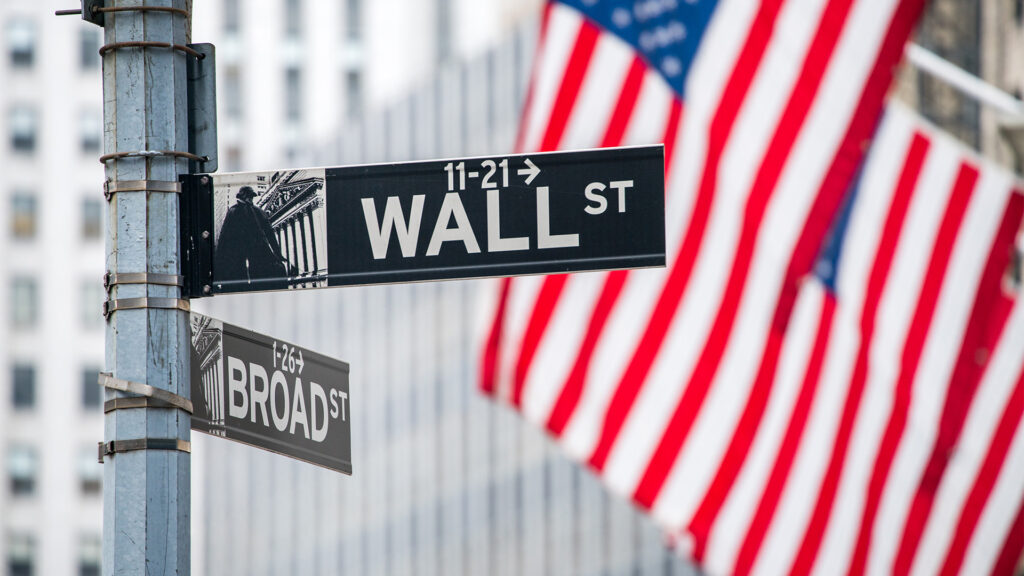And now there are five, the so-called Magnificent Seven having dropped a couple of amigos on the way to driving Wall Street to a 14% plus gain in the six months to June 28.
Friday saw the Dow down 45.20 points, or 0.12%, to 39,118.86; the S&P 500 was off 22.39 points, or 0.41%, at 5,460.48; and the Nasdaq lost 126.08 points, or 0.71%, to 17,732.60. For the quarter, the S&P 500 gained 3.9%, the Nasdaq rose 8.3%, and the Dow fell 1.7%. For June, the Dow was up just over 1%, the S&P 500 added nearly 3.5%, and the Nasdaq lifted 6%.
For the half-year, the S&P 500 was up nearly 14.5%, the Nasdaq jumped 18.1%, and the Dow was up nearly 3.8%.
The solid rise came as investors voiced growing concern over the narrowness of a rally in which just five stocks have driven most of the gains.
Almost 60% of the S&P 500’s gain for the year to date was driven by just five “megacap” companies — Nvidia, Microsoft, Amazon, Meta, and Apple. They have all been boosted by an investor frenzy over the potential of generative artificial intelligence. Nvidia alone accounted for 31% of the market’s first-half advance.
Nvidia shares surged 156% in the first half of the year, but only 7.6% in June—not a very convincing end to the quarter and half-year—and only 0.18% last week, which was a long way from those weekly and daily double-digit gains.
Perhaps that reflected growing signs of a “weakness that has been developing under the surface of the market,” according to Kevin Gordon, senior investment strategist at Charles Schwab.
“It’s not unusual throughout history to see the largest members account for large gains in the indices, but when the rest of the market is struggling, that’s when red flags pop up,” he said on Friday.
Alphabet, with a 31% gain, and Meta, with a 45% gain for the half, didn’t quite make it into the Mega Five. Netflix did better than most with a 44% rise after conclusively showing it had won the streaming wars, but its $288 billion market value makes it a tiddler compared with the MegaCaps.
Tesla was the fallen angel with a 20% slide in the half-year, though a 12% gain in June made the loss look less embarrassing for Elon Musk. But Tesla will be tested again this week with new global production and sales data to be issued.
And even though Donald Trump easily battered Joe Biden into submission in Thursday’s first presidential debate, it didn’t help the shares in Trump Media, which lost nearly 11% in value on Friday. That trimmed the week’s gain to 18.4%, but it was still down 47% in the last three months.
But for all the noise and attention-seeking of Trump and the looming November elections, investors are overwhelmingly besotted with AI in every form analysts, punters, tech heads, and anyone else can dream up.
“AI has sucked all the oxygen out of the room,” Andrew Slimmon, a senior portfolio manager at Morgan Stanley Investment Management, told the Financial Times. “It has so much exposure it has kind of left behind other areas. I think there’s a lot of companies in areas like industrials and financials where business is very good, yet they’ve been forgotten about,” he added.
He and some other analysts hope the looming second-quarter reporting season will drag attention back to other non-AI areas of the S&P 500.
“This is the most concentrated that the market has been in at least 20 years,” said Denise Chisholm, director of quantitative market strategy at Fidelity, also to the FT. Chisholm said most investors, influenced by comparisons with the dotcom bubble, assumed that the current high level of concentration was inherently unstable. However, she argued there had been several earlier periods when “the market stayed very concentrated for a very long time. I’m not saying it has to be a good thing,” she added. “But it’s difficult to come away as an investor with a data-driven approach and say ‘it’s definitely bad and I’m sure and would bet my portfolio on it’.”
But the coming quarter will again be driven by dates for major reporting companies like Netflix, Apple, Amazon, Meta, Microsoft, perhaps Alphabet (all in late July or early August), and Nvidia’s second-quarter report on August 14 or August 21 (not yet confirmed).

